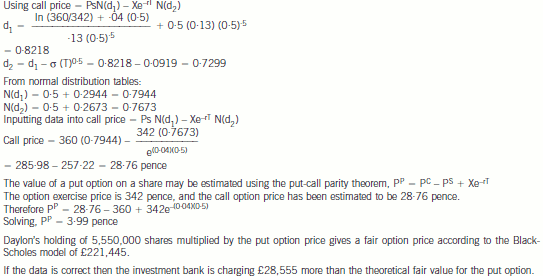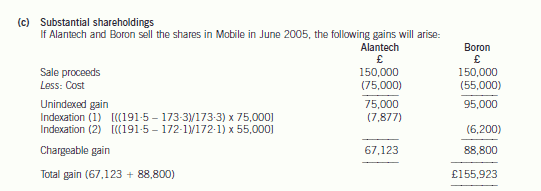ACCA证书有免考吗?有哪些情况可以免考?
发布时间:2020-01-13
众所周知,ACCA考试有一定科目的免试权政策。许多ACCA学员更快拿下ACCA证书都会想要申请一定科目的免试。那么,哪些情况我们是可以申请免试呢?可以免考哪些科目呢?51题库考试学习网带领大家一起来了解一下。
一、国内ACCA免考政策
1.ACCA对中国教育部认可的全日制大学在读生设置的免试政策:
(1)会计学或金融学:可以注册为ACCA正式学员,无免试
(2)会计学或金融学:免试前3门课程
(3)会计学或金融学:免试前5门课程
(4)其他专业:可以注册但无免试
2.ACCA对中国教育部认可高校毕业生设置的免试政策:
(1)会计学:免试前5门课程
(2)会计学:免试前3门课程
(3)金融专业:免试前5门课程
(4)法律专业:免试1门课程
(5)商务及管理专业:免试1门课程
(6)非相关专业:无免试
3.注册会计师考生:
(1)2009年CICPA“6+1”新制度实行之前获得CICPA全科通过的人员:免试5门课程
(2)2009年CICPA“6+1”新制度实行之后获得CICPA全科通过的人员:免试9们课程
(3)如果在学习ACCA基础阶段科目的过程中获得了CICPA全科合格证,可以自行决定是否申请追加免试。
4.其他证书互免情况全科通过并取得证书:
免试前三科A,全科通过:免试AB-TX、AA、FM ACCA
二、国外ACCA免考政策
1.国内+国外联合教学模式,以留学英国为例,至少需要从国外大学本科大二开始读起,才有免考资格,如果学生插读英国大学本科最后一年或者HND学生就读TOP课程是不能享受免考政策的。
2.澳大利亚、新加坡、英国等地的本科会计相关专业的毕业生,一般可以直接免考9门。 3.国外大学专业课一般有专业必修课和选修课之分,部分学校及时有7-9门的免考政策,但需要要求学生选修ACCA官方要求的选修科目。
4.国外大学不是所有大学均可以免考9门,根据ACCA官方与大学是否合作,以及对专业课的评估,有的免考7-9门,有些学校则无免试政策。
三、免考注意事项:
1、在校生只有顺利通过整学年的课程才能够申请免试。
2、针对在校生的部分课程免试政策只适用于会计学专业全日制大学本科的在读学生,而不适用于硕士学位或大专学历的在读学生。
3、已完成MPAcc学位大纲规定课程,还需完成论文的学员也可注册并申请免试。
4、须提交由学校出具的通过所有MPAcc学位大纲规定课程的成绩单,并附注“该学员已通过所有MPAcc学位大纲规定课程,论文待完成”的说明。
5、特许学位—部分完成时不能申请免试。
6、政策适用于在中国教育部认可的高等院校全部完成或部分完成本科课程的学生,而不考虑目前居住地点。
7、欲申请牛津布鲁克斯大学学士学位的学员需放弃F7-F9的免试。
好了,看了上面的内容,相信大家对ACCA免试政策有了一定的了解。如果还想了解更多信息,欢迎来51题库考试学习网留言。
下面小编为大家准备了 ACCA考试 的相关考题,供大家学习参考。
3 Assume that today’s date is 10 May 2005.
You have recently been approached by Fred Flop. Fred is the managing director and 100% shareholder of Flop
Limited, a UK trading company with one wholly owned subsidiary. Both companies have a 31 March year-end.
Fred informs you that he is experiencing problems in dealing with aspects of his company tax returns. The company
accountant has been unable to keep up to date with matters, and Fred also believes that mistakes have been made
in the past. Fred needs assistance and tells you the following:
Year ended 31 March 2003
The corporation tax return for this period was not submitted until 2 November 2004, and corporation tax of £123,500
was paid at the same time. Profits chargeable to corporation tax were stated as £704,300.
A formal notice (CT203) requiring the company to file a self-assessment corporation tax return (dated 1 February
2004) had been received by the company on 4 February 2004.
A detailed examination of the accounts and tax computation has revealed the following.
– Computer equipment totalling £50,000 had been expensed in the accounts. No adjustment has been made in
the tax computation.
– A provision of £10,000 was made for repairs, but there is no evidence of supporting information.
– Legal and professional fees totalling £46,500 were allowed in full without any explanation. Fred has
subsequently produced the following analysis:
Analysis of legal & professional fees
£
Legal fees on a failed attempt to secure a trading loan 15,000
Debt collection agency fees 12,800
Obtaining planning consent for building extension 15,700
Accountant’s fees for preparing accounts 14,000
Legal fees relating to a trade dispute 19,000
– No enquiry has yet been raised by the Inland Revenue.
– Flop Ltd was a large company in terms of the Companies Act definition for the year in question.
– Flop Ltd had taxable profits of £595,000 in the previous year.
Year ended 31 March 2004
The corporation tax return has not yet been submitted for this year. The accounts are late and nearing completion,
with only one change still to be made. A notice requiring the company to file a self-assessment corporation tax return
(CT203) dated 27 July 2004 was received on 1 August 2004. No corporation tax has yet been paid.
1 – The computation currently shows profits chargeable to corporation tax of £815,000 before accounting
adjustments, and any adjustments for prior years.
– A company owing Flop Ltd £50,000 (excluding VAT) has gone into liquidation, and it is unlikely that any of this
money will be paid. The money has been outstanding since 3 September 2003, and the bad debt will need to
be included in the accounts.
1 Fred also believes there are problems in relation to the company’s VAT administration. The VAT return for the quarter
ended 31 March 2005 was submitted on 5 May 2005, and VAT of £24,000 was paid at the same time. The previous
return to 31 December 2004 was also submitted late. In addition, no account has been made for the VAT on the bad
debt. The VAT return for 30 June 2005 may also be late. Fred estimates the VAT liability for that quarter to be £8,250.
Required:
(a) (i) Calculate the revised corporation tax (CT) payable for the accounting periods ending 31 March 2003
and 2004 respectively. Your answer should include an explanation of the adjustments made as a result
of the information which has now come to light. (7 marks)
(ii) State, giving reasons, the due payment date of the corporation tax (CT) and the filing date of the
corporation tax return for each period, and identify any interest and penalties which may have arisen to
date. (8 marks)
(a) Calculation of corporation tax
Year ended 31 March 2003
Corporation tax payable
There are three adjusting items:.
(i) The computers are capital items, as they have an enduring benefit. These need to be added back in the Schedule D
Case I calculation, and capital allowances claimed instead. The company is not small or medium by Companies Act
definitions and therefore no first year allowances are available. Allowances of £12,500 (50,000 x 25%) can be claimed,
leaving a TWDV of £37,500.
(ii) The provision appears to be general in nature. In addition there is insufficient information to justify the provision and it
should be disallowed until such times as it is released or utilised.
(iii) Costs relating to trading loan relationships are allowable, as are costs relating to the trade (debt collection, trade disputes
and accounting work). Costs relating to capital items (£5,700) are not allowable so will have to be added back.
Total profit chargeable to corporation tax is therefore £704,300 + 50,000 – 12,500 + 10,000 + 5,700 = 757,500. There are two associates, and therefore the 30% tax rate starts at £1,500,000/2 = £750,000. Corporation tax payable is 30% x£757,500 = £227,250.
Payment date
Although the rate of tax is 30% and the company ‘large’, quarterly payments will not apply, as the company was not large in the previous year. The due date for payment of tax is therefore nine months and one day after the end of the tax accounting period (31 March 2003) i.e. 1 January 2004.
Filing date
This is the later of:
– 12 months after the end of the period of account: 31 March 2004
– 3 months after the date of the notice requiring the return 1 May 2004
i.e. 1 May 2004.

3 The managers of Daylon plc are reviewing the company’s investment portfolio. About 15% of the portfolio is represented by a holding of 5,550,000 ordinary shares of Mondglobe plc. The managers are concerned about the effect on portfolio value if the price of Mondglobe’s shares should fall, and are considering selling the shares. Daylon’s investment bank has suggested that the risk of Mondglobe’s shares falling by more than 5% from their current value could be protected against by buying an over the counter option. The investment bank is prepared to sell an appropriate six month option to Daylon for £250,000.
Other information:
(i) The current market price of Mondglobe’s ordinary shares is 360 pence.
(ii) The annual volatility (variance) of Mondglobe’s shares for the last year was 169%.
(iii) The risk free rate is 4% per year.
(iv) No dividend is expected to be paid by Mondglobe during the next six months.
Required:
(a) Evaluate whether or not the price at which the investment bank is willing to sell the option is a fair price.(10 marks)
3 (a) The investment bank is offering to sell to Daylon plc an option to sell Mondglobe ordinary shares at a price no worse than 5% below the current market price of 360 pence. This is a put option on Mondglobe shares at a price of 342 pence. The Black-Scholes option pricing model may be used to estimate whether or not the option price is a fair price. The value of a put option may be found by first estimating the value of a call option and then using the put-call parity theorem.
Basic data:
Share price 360 pence
Exercise price 342 pence
Risk free rate 4% (0·04)
Volatility is measured by the standard deviation. The variance is 169% therefore the standard deviation, σ is 13% (0·13)
The relevant period is six months (0·5)

(c) Comment on the matters to be considered in seeking to determine the extent of Indigo Co’s financial loss
resulting from the alleged fraud. (6 marks)
(c) Extent of alleged fraud – Matters to be considered
■ Details reported to police: The managing director may have made some estimate of the possible extent of the fraud in
reporting the chief accountant’s disappearance to the police.
■ The minimum loss (assuming no insurance) would be sales for the three days before he left. If not known (e.g. because
the only record of them was in the cash book) a simple estimate might be 3/20 × total recorded revenue for a typical
month.
■ The pattern of cash bankings extracted from bank statements: A falling trend starting during the year might mark the
time from which the chief accountant began to misappropriate cash.
■ Whether other managers have voiced their suspicions, if any, on the chief accountant’s behaviour. For example, if there
was any marked change in his lifestyle. (what he appeared to spend his money on, the hours he worked, etc).
■ The prior year auditor’s report was unmodified. If this was appropriate the chief accountant’s alleged fraudulent activities
may have only started in the current year.
■ The amount of fidelity insurance cover (i.e. against employees handling cash) that Indigo has taken out to meet any
claim for fraud.
■ The likelihood, if any, of recovering misappropriated amounts. For example, if the chief accountant has assets (e.g. a
house) that can be used to settle Indigo’s claims against him in the event that he is caught/successfully prosecuted.
(c) Advise Alan on the proposed disposal of the shares in Mobile Ltd. Your answer should include calculations
of the potential capital gain, and explain any options available to Alan to reduce this tax liability. (7 marks)

However, an exemption from corporation tax exists for any gain arising when a trading company (or member of a trading
group) sells the whole or any part of a substantial shareholding in another trading company.
A substantial shareholding is one where the investing company holds 10% of the ordinary share capital and is beneficially
entitled to at least 10% of the
(i) profits available for distribution to equity holders and
(ii) assets of the company available for distribution to equity holders on a winding up.
In meeting the 10% test, shares owned by a chargeable gains group may be amalgamated. The 10% test must have been
met for a continuous 12 month period during the 2 years preceding the disposal.
The companies making the disposals must have been trading companies (or members of a trading group) throughout the
12 month period, as well as at the date of disposal. In addition, they must also be trading companies (or members of a trading
group) immediately after the disposal.
The exemption is given automatically, and acts to deny losses as well as eliminate gains.
While Alantech Ltd has owned its holding in Mobile Ltd for 33 months, its ownership of the Boron holding has only lasted
for 10 months (at 1 June 2005) since Boron was acquired on 1 July 2004. Selling the shares in June 2005 will fail the
12 month test, and the gain will become chargeable.
It would be better for the companies to wait for a further month until July 2005 before selling the amalgamated shareholding.
By doing so, they will both be able to take advantage of the substantial shareholdings relief, thereby saving tax of £29,625
assuming a corporation tax rate of 19%.
声明:本文内容由互联网用户自发贡献自行上传,本网站不拥有所有权,未作人工编辑处理,也不承担相关法律责任。如果您发现有涉嫌版权的内容,欢迎发送邮件至:contact@51tk.com 进行举报,并提供相关证据,工作人员会在5个工作日内联系你,一经查实,本站将立刻删除涉嫌侵权内容。
- 2019-12-29
- 2020-01-10
- 2020-01-09
- 2020-09-03
- 2020-09-03
- 2020-01-09
- 2020-01-09
- 2020-09-03
- 2020-12-31
- 2021-03-28
- 2020-01-10
- 2020-01-09
- 2021-04-02
- 2020-09-03
- 2020-01-10
- 2019-12-29
- 2020-01-08
- 2020-01-09
- 2020-01-09
- 2020-09-03
- 2020-02-26
- 2020-09-03
- 2021-04-25
- 2021-01-13
- 2020-01-10
- 2021-04-22
- 2020-01-10
- 2021-02-02
- 2020-01-09
- 2019-03-24